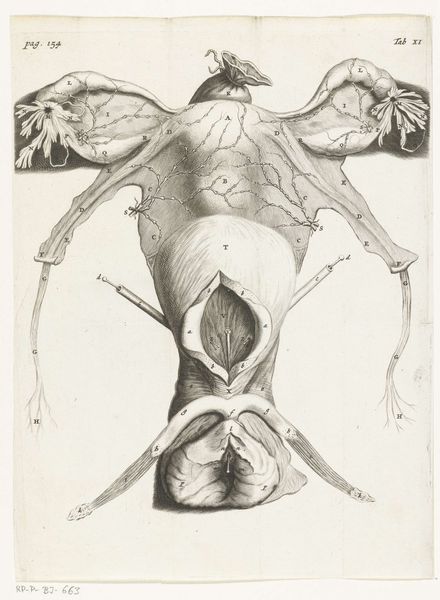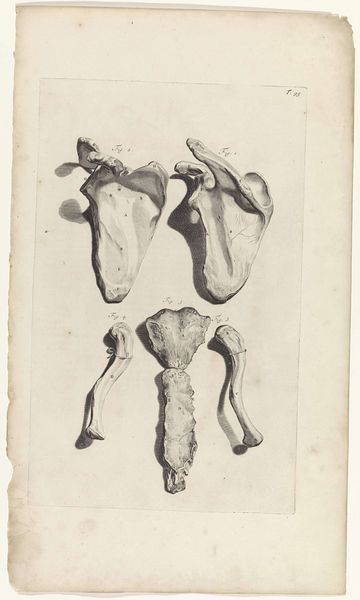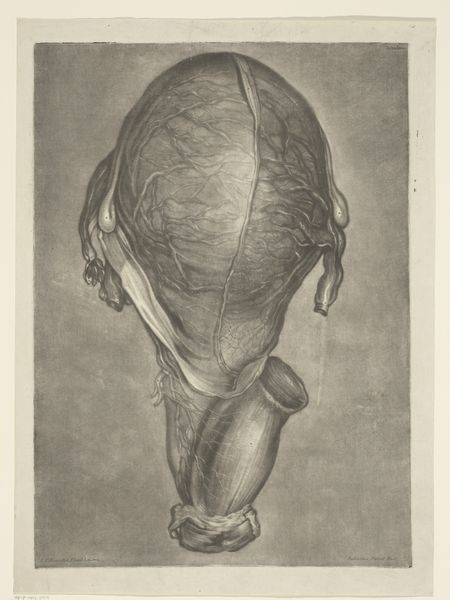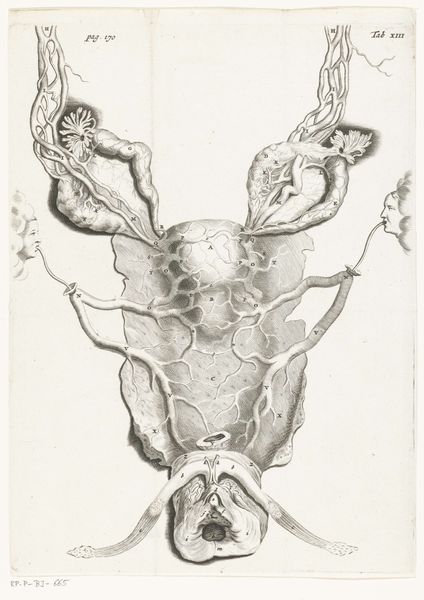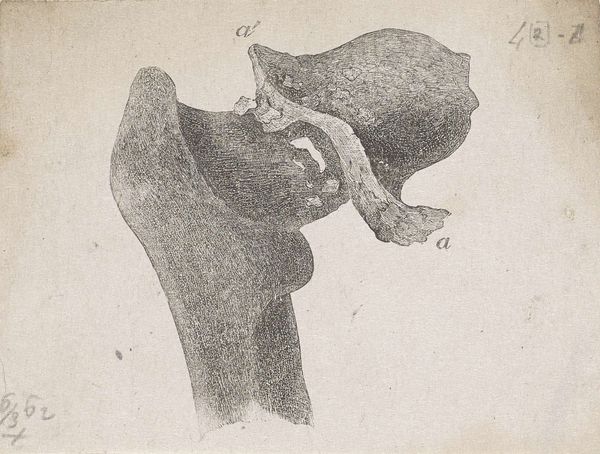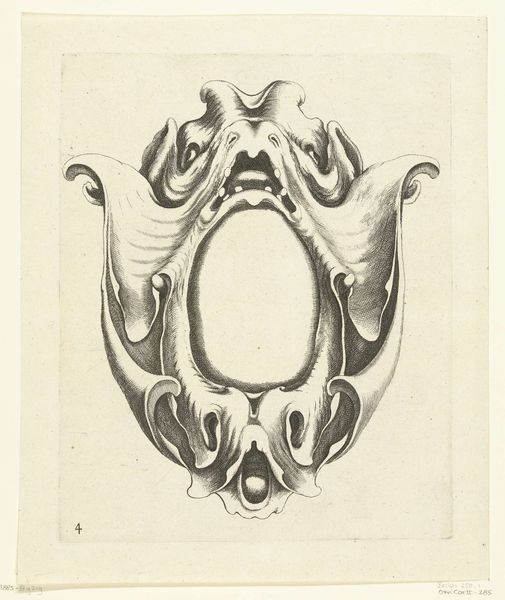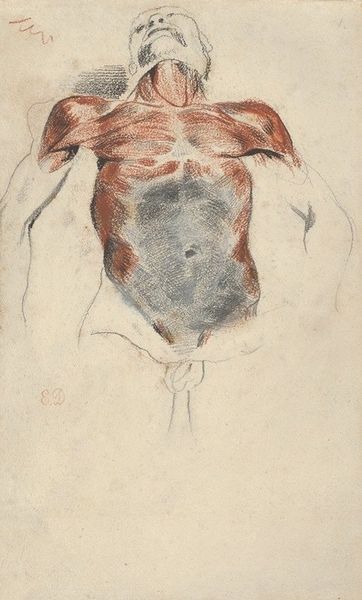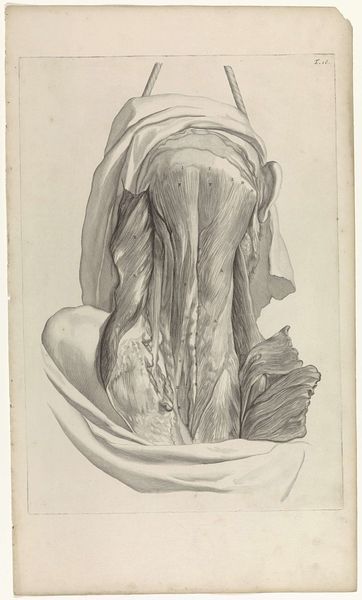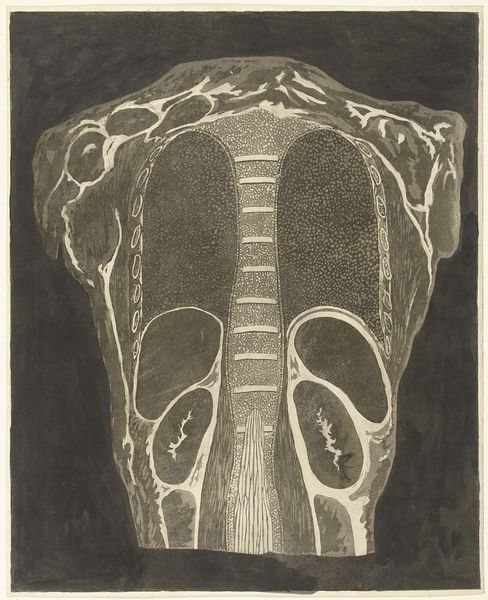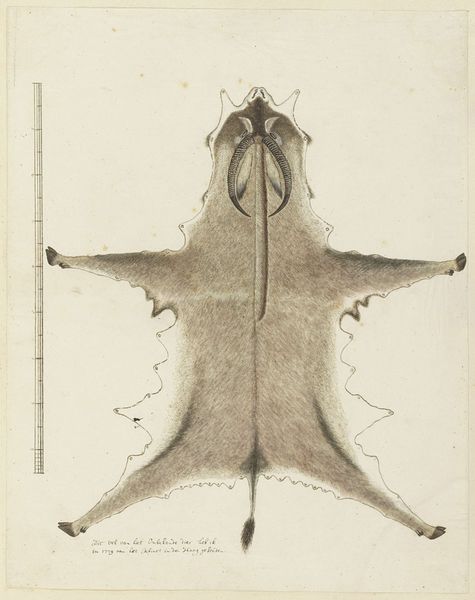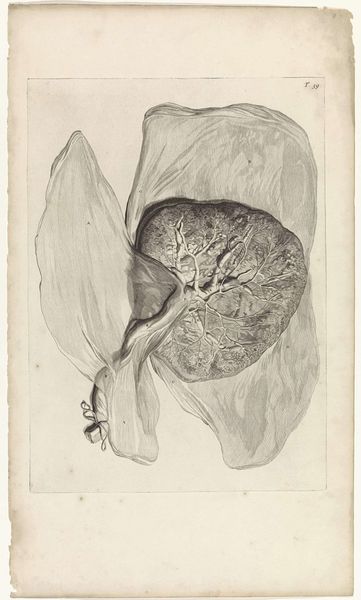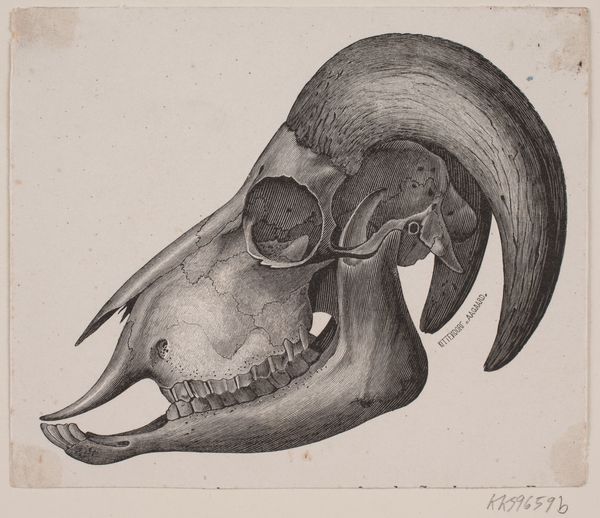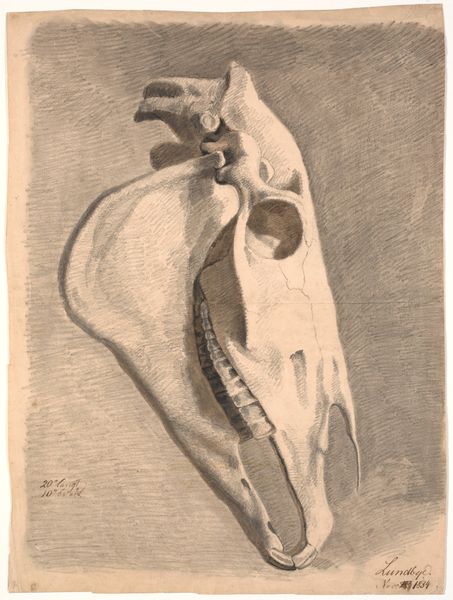
Anatomische afbeelding van de binnenkant van de uterus, de eileider en eierstokken 1672
0:00
0:00
hendrikbary
Rijksmuseum
print, engraving
#
baroque
# print
#
pencil sketch
#
pen-ink sketch
#
history-painting
#
academic-art
#
nude
#
engraving
Dimensions: height 257 mm, width 198 mm
Copyright: Rijks Museum: Open Domain
Hendrik Bary created this anatomical depiction of the uterus, fallopian tubes, and ovaries sometime between 1640 and 1707 using engraving. During the 17th century, the scientific revolution brought about significant shifts in understanding the human body. Bary's work reflects a growing interest in anatomical accuracy, yet it's essential to recognize that such depictions were deeply embedded in the social and cultural contexts of the time. Consider the gendered implications of this image. Anatomy was largely a male-dominated field, and representations of the female body often reinforced existing societal norms and power structures. The uterus, as a site of reproduction, was particularly subject to cultural interpretations and control. Bary’s engraving invites us to reflect on the historical gaze directed towards women's bodies. How might the women who encountered this image have felt, seeing their bodies dissected and displayed in this way? Ultimately, this image prompts us to consider the intersection of science, gender, and power in shaping our understanding of the human body.
Comments
No comments
Be the first to comment and join the conversation on the ultimate creative platform.
